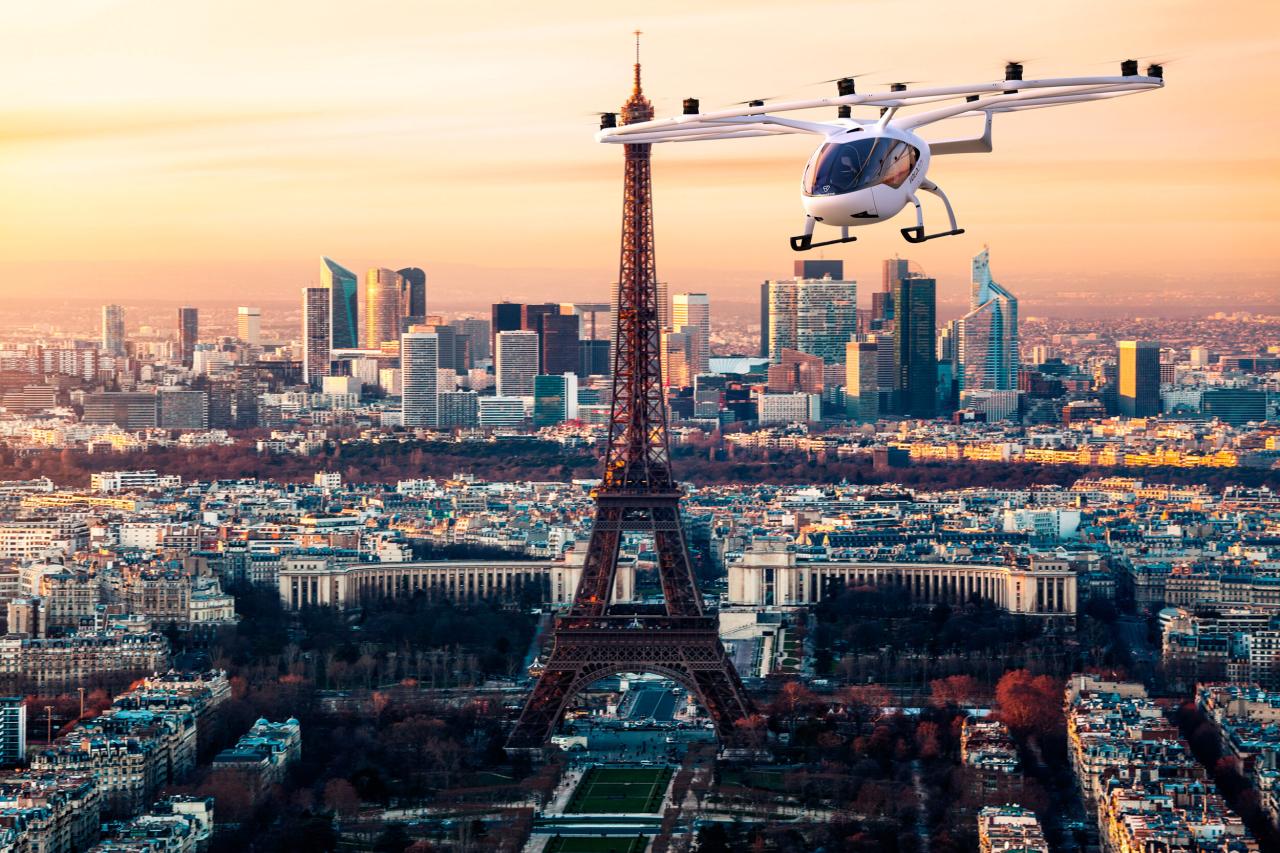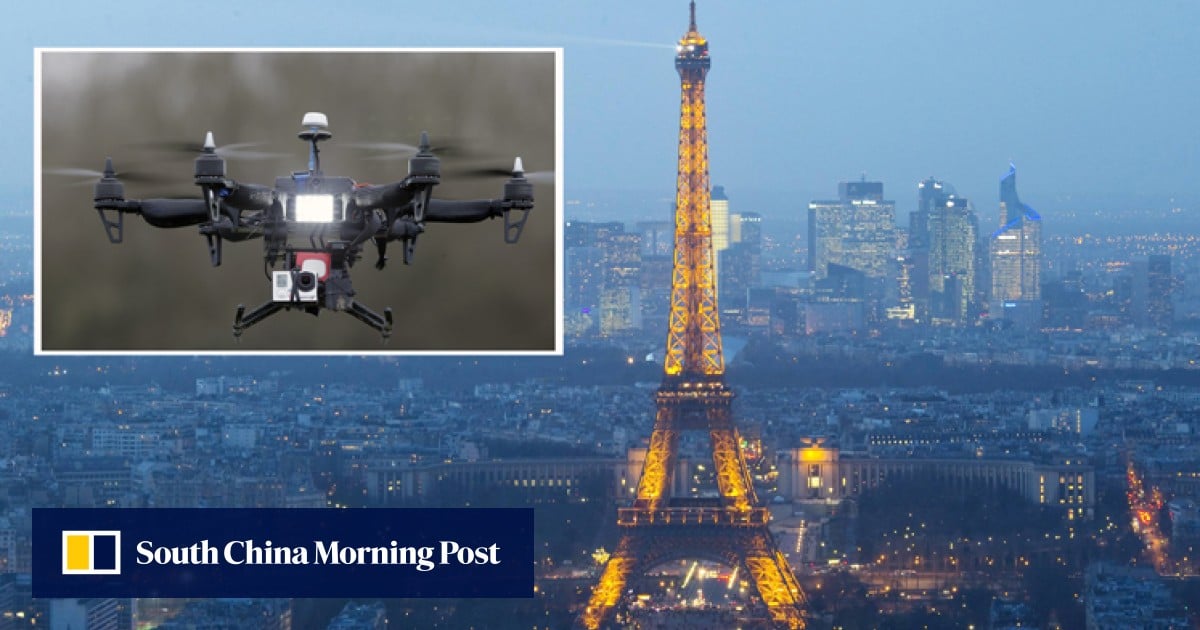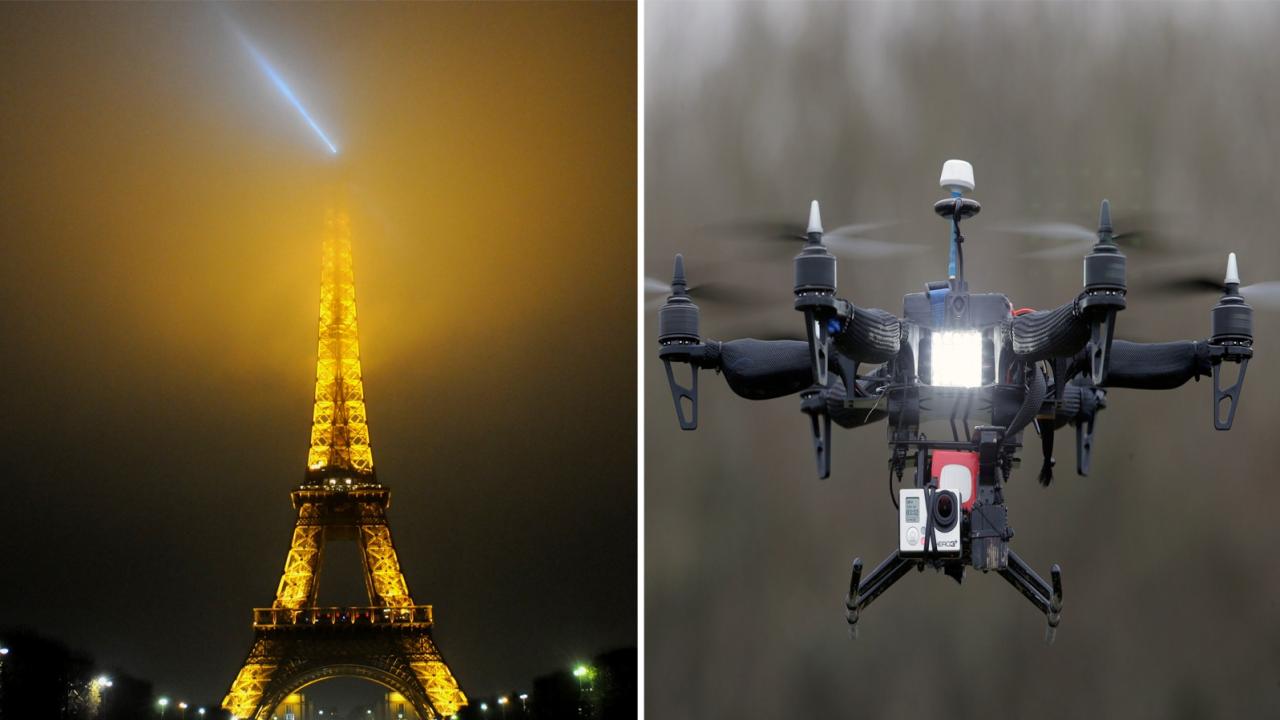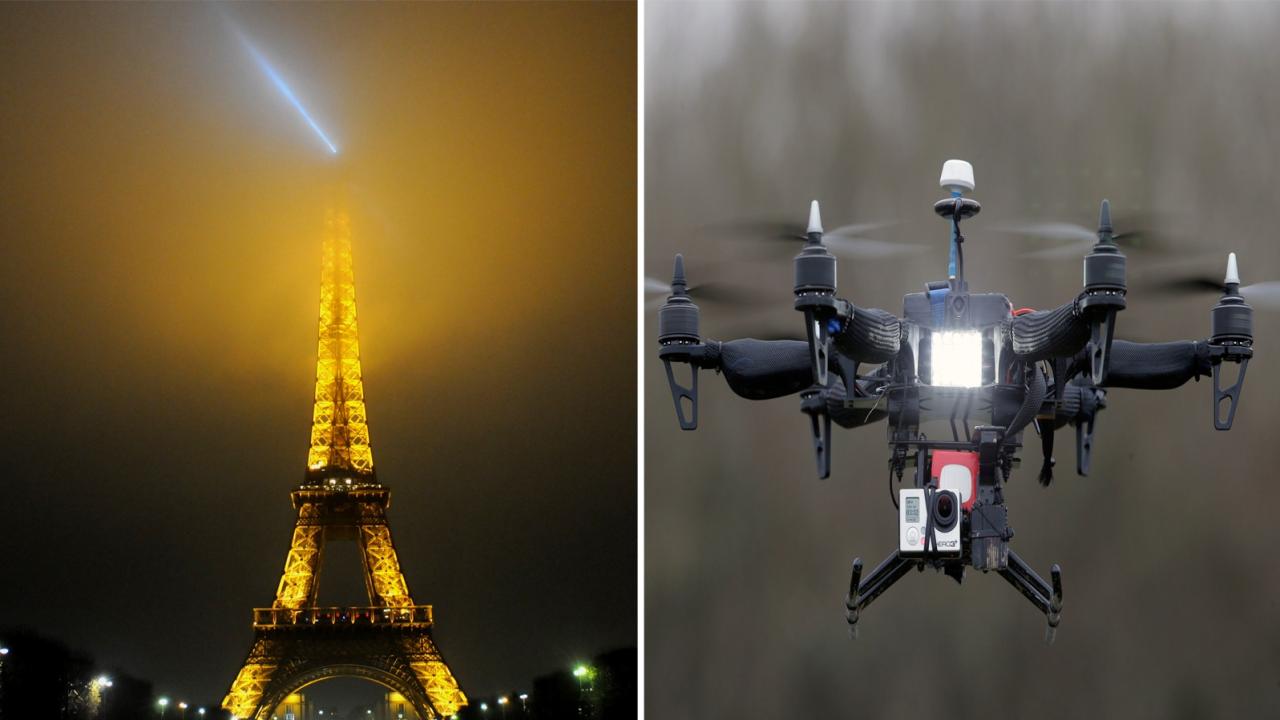Drone in Paris: Soaring above the City of Lights offers breathtaking views, but navigating the regulations and possibilities requires careful planning. This guide explores the legal landscape, popular uses, photographic opportunities, commercial services, ethical considerations, and the future of drones in this iconic city. We’ll cover everything from obtaining permits to understanding the unique challenges and rewards of capturing Paris from above.
From capturing stunning aerial shots of the Eiffel Tower to utilizing drones for efficient package delivery, the potential applications are vast. However, strict regulations are in place to ensure safety and privacy. We’ll break down these regulations, highlighting key differences compared to other European capitals and exploring the potential consequences of non-compliance. We’ll also delve into the ethical considerations surrounding drone usage in such a densely populated area, examining potential privacy concerns and environmental impacts.
Thinking about flying a drone in Paris? It’s a beautiful city, but regulations are strict. Before you even think about taking off, check out this super helpful resource on drone laws and regulations in the city of lights: drone in paris. Knowing the rules beforehand will save you a lot of hassle and potential fines, ensuring your Parisian drone experience is smooth and enjoyable.
So, get informed and happy flying!
Drone Regulations in Paris
Navigating the airspace above Paris with a drone requires a thorough understanding of the city’s specific regulations. These rules, often stricter than in other areas, are designed to ensure safety and security. Understanding these regulations is crucial for both recreational and commercial drone users.
Thinking about drone photography in Paris? The Eiffel Tower from above would be amazing! But before you fly, check out the drone regulations – and maybe grab some extra batteries from a reliable source like drone canadian tire if you’re planning a similar trip in Canada. Knowing your drone’s limitations and having backup power are key for smooth Parisian drone adventures.
Specific Drone Laws and Regulations in Paris

Drone operation in Paris is governed by national French regulations, supplemented by local ordinances. Generally, flights are restricted within a certain radius of major landmarks, airports, and densely populated areas. Height restrictions are also in place, usually limiting flights to a maximum altitude of 150 meters. Operating a drone at night is typically prohibited without special permission.
Furthermore, pilots must maintain visual line-of-sight with their drones at all times.
Comparison with Other European Cities
Parisian drone regulations are comparable in stringency to those in other major European capitals like London and Amsterdam. These cities often share similar concerns regarding airspace safety and privacy. However, specific restrictions may vary based on local infrastructure and population density. For example, while Paris may have stricter rules near historical monuments, London might have more stringent regulations near airports due to its higher air traffic volume.
Smaller cities may have more relaxed rules, but this is not always the case.
Penalties for Violating Drone Regulations
Violating drone regulations in Paris can result in significant penalties. These can include hefty fines, drone confiscation, and even potential criminal charges depending on the severity of the infraction. Unauthorized flights near sensitive areas like airports or government buildings could lead to more serious consequences.
Flowchart for Obtaining Drone Flight Permits
The process of obtaining a permit for drone flights in Paris typically involves applying through the relevant authorities, providing details about the flight plan, including date, time, location, and purpose. A thorough risk assessment might also be required. The process can be time-consuming and requires meticulous documentation.
A simplified flowchart would show the following steps: 1. Application Submission; 2. Risk Assessment Review; 3. Permit Approval/Rejection; 4. Flight Execution (if approved); 5.
Post-Flight Reporting.
Popular Drone Activities in Paris
Drones have found diverse applications in Paris, ranging from creative endeavors to commercial services. Understanding these uses provides insight into the drone’s impact on the city.
Common Drone Uses in Paris, Drone in paris
- Photography and Videography: Capturing stunning aerial views of iconic landmarks.
- Real Estate Marketing: Showcasing properties from unique perspectives.
- Infrastructure Inspection: Assessing bridges, buildings, and other structures for damage.
- Film Production: Creating cinematic aerial shots for movies and television.
Successful Drone Projects and Initiatives
Several successful projects have utilized drones in Paris. For example, drones have been employed to create detailed 3D models of historical sites, aiding in preservation efforts. Others have used drones for delivering urgent medical supplies in emergency situations, demonstrating their potential in urban environments.
Statistics on Registered Drones and Incidents
Precise statistics on registered drones and incidents in Paris are not publicly available in a consistently updated manner. However, the overall trend indicates a gradual increase in drone registrations and a relatively low number of serious incidents, suggesting a growing level of responsible drone operation.
Comparison of Drone Advantages and Disadvantages
| Activity | Advantages | Disadvantages |
|---|---|---|
| Photography/Videography | Unique perspectives, wide shots | Airspace restrictions, battery life |
| Real Estate | Attractive marketing materials | Cost, regulatory hurdles |
| Infrastructure Inspection | Efficient, detailed inspections | Weather dependency, operator skill |
| Delivery | Speed, efficiency in specific areas | Limited payload, safety concerns |
Drone Photography and Videography in Paris
Paris offers unparalleled opportunities for breathtaking aerial photography and videography. However, navigating the complexities of airspace restrictions and achieving optimal image quality requires careful planning and technical expertise.
Challenges and Opportunities
Capturing aerial footage of Paris presents unique challenges, primarily airspace restrictions around protected areas and landmarks. However, the city’s stunning architecture and iconic landmarks provide incredible opportunities for creating captivating visuals. Careful planning and adherence to regulations are key to successful drone operations.
Best Locations for Drone Photography
While many locations are restricted, areas like the Bois de Boulogne and the Parc des Buttes-Chaumont offer possibilities for stunning shots with fewer restrictions, provided all regulations are followed. Always check local regulations before flying in any specific area.
Flying a drone in Paris? Awesome! But to get a strong connection for your drone’s live feed, you’ll need a solid Wi-Fi signal. Before you take off, make sure you’re using the optimal frequency band by checking if you’re on 2.4 GHz or 5 GHz; learn how by checking out this quick guide on how to check your wifi ghz on iphone.
Knowing your Wi-Fi frequency can help avoid interference and ensure smooth drone operation over the Parisian skyline.
Technical Aspects of High-Quality Aerial Footage
Achieving high-quality aerial images and videos involves understanding factors like camera settings (aperture, shutter speed, ISO), lighting conditions, and post-processing techniques. Using appropriate filters and understanding the limitations of the drone’s camera are also crucial.
Effect of Drone Camera Settings
Different camera settings impact the final output significantly. For instance, a wide aperture will create a shallow depth of field, ideal for isolating subjects, while a narrow aperture will provide greater depth of field, useful for landscapes. Higher ISO values are needed in low-light conditions, but they can introduce noise. Experimentation and understanding these variables are key to mastering aerial photography.
Drone-Based Services in Paris: Drone In Paris
Numerous businesses in Paris leverage drone technology for commercial applications. Understanding these services and their costs helps assess the economic impact of drones in the city.
Businesses Utilizing Drones
Several companies in Paris offer drone-based services, including aerial photography for real estate, infrastructure inspections for construction firms, and delivery services for smaller packages. Many are specialized in specific niches, like filming high-end fashion shows or creating detailed maps for urban planning.
Costs of Drone-Based Services
The cost of drone services varies depending on factors such as flight duration, complexity of the project, and the required level of post-processing. Aerial photography for a small real estate project might cost a few hundred euros, while large-scale infrastructure inspections could cost thousands.
Safety Measures Employed
Reputable Parisian drone service providers prioritize safety. This includes thorough pre-flight checks, adherence to all regulations, and the use of qualified and experienced drone pilots. They also maintain comprehensive insurance coverage to mitigate potential risks.
Marketing Campaign for Real Estate Photography
A marketing campaign promoting drone-based real estate photography could emphasize the unique perspectives and high-quality images drones provide. The campaign could target luxury real estate agents, highlighting the increased appeal and potential for higher sale prices resulting from stunning aerial views of properties.
Ethical and Societal Implications of Drones in Paris
The increasing use of drones in Paris raises several ethical and societal considerations that require careful attention.
Privacy Concerns
Widespread drone use raises privacy concerns, particularly regarding unauthorized surveillance. Regulations must balance the benefits of drone technology with the need to protect individual privacy. Clear guidelines and limitations on data collection are crucial.
Environmental Impact
While generally low, the environmental impact of drones in a densely populated city like Paris needs consideration. Battery disposal and the potential for noise pollution are factors to address. Promoting the use of sustainable materials and quieter drone models can mitigate these issues.
Security Risks

Unauthorized drone operation poses security risks, especially near sensitive locations. Robust security measures, including drone detection systems and strict enforcement of regulations, are necessary to prevent potential threats.
Improving Quality of Life
Drones can improve the quality of life in Paris through applications like efficient delivery of goods, monitoring of traffic flow, and assistance in emergency situations. By optimizing these applications, drones can contribute to a more efficient and safer urban environment.
Future of Drones in Paris
The future of drones in Paris is likely to be shaped by technological advancements and evolving regulations. Predicting this future requires considering the potential impact of new technologies and societal needs.
Potential Future Applications

Future applications could include autonomous delivery systems for packages and groceries, improved emergency response capabilities, and more sophisticated infrastructure monitoring. Drones could also play a role in environmental monitoring and urban planning.
Impact of Technological Advancements
Advancements in drone technology, such as improved battery life, autonomous navigation, and enhanced sensor capabilities, will likely lead to more sophisticated applications and potentially influence regulations. This could mean more relaxed rules in certain controlled environments, while stricter rules remain in place for sensitive areas.
Addressing Urban Challenges
Drones have the potential to address various urban challenges in Paris, including traffic congestion, efficient waste management, and improved public safety. The integration of drones into existing urban infrastructure will be crucial for realizing these benefits.
Projected Evolution of Drone Use (10-Year Timeline)
Over the next 10 years, we can expect to see a gradual increase in the integration of drones into various aspects of Parisian life. Initial growth will likely focus on commercial applications like delivery and inspection, followed by expansion into public services and more advanced autonomous operations. Regulations will likely adapt to accommodate this growth, balancing safety and innovation.
Closing Notes
Ultimately, the future of drones in Paris hinges on a balance between innovation and responsible regulation. As technology advances and regulations adapt, drones promise to play an increasingly significant role in various aspects of Parisian life, from enhancing tourism and streamlining logistics to addressing urban challenges and improving public services. By understanding the current landscape and anticipating future developments, we can harness the power of drones for the benefit of both residents and visitors alike.
Key Questions Answered
What type of drone is allowed in Paris?
Regulations focus on weight and capabilities, not specific drone models. Check the latest rules for weight limits and required certifications.
Can I fly a drone near the Eiffel Tower?
No. No-fly zones exist around major landmarks. Always check the official airspace restrictions before flying.
How much does a drone permit cost in Paris?
Permit costs vary depending on the type of flight and its purpose. Check the official authorities for current pricing.
Where can I find updated drone regulations for Paris?
Consult the official website of the relevant French aviation authority for the most up-to-date information.
